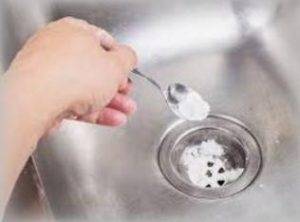Blocked sinks are among the most common household problems. More often than not, homeowners neglect their drains. As a result, there is a regular need to double the kitchen sink drain and sometimes it still has standing water.
They do not maintain well and so at some point the kitchen or bathroom sinks get partially or fully blocked.
When this happens, water starts to drain at a frustratingly slow rate, and eventually the sink fills with dirty standing water. A clogged sink with standing water and debris floating in it is one of the ugliest things in any house.
Also Read: Best Portable Whirlpool for Bathtub
What Causes the Double Sink Drain to get Clogged?
The kitchen sinks are the heavy hitters in almost every home. They are used to clean almost everything.
As such, the kitchen drain is exposed to a wide range of matter that can lead to blockage, including;
- Food waste. Things like coffee grounds, tea leaves, and small food particles can easily clog up the drain. It is, therefore, advisable not to throw any food waste into the sink, no matter how small.
- Small objects. Bottle caps, wedding rings, and many other small items can get stuck in the drain and causing it to clog. Such clogging can lead to the sink gurgling at times.
- Soap. Ordinary soap bars are made with animal fat or grease. Often, soap leaves a solid residue that lines the inside of the pipes.
- Grease. Oils, grease, and fat can accumulate on the inside of the pipe and capture other particles forming a substantial obstruction. Grease is also difficult to clear out.
- Mineral buildup. Hard water deposits in the drain can cause a blockage over time. This also leads to yellow stains on the sink, which you should also remove. You may need professional help to remove mineral buildup.
How to Unclog a Double Kitchen Sink Drain with Standing Water
The following are the 5 methods we have tried and tested to unclog the sink drain with standing water still in;
- The Plunger method
- Removing the P-trap connector
- The drain snake method
- The disposal suction method
- Vinegar and Baking Soda Method
Before we delve into it, let’s explore the tools you will need. You can unblock a double kitchen sink drain with stagnant water using standard household home maintenance tools.
The tools you will need may include
- A Bucket
- Some rubber gloves
- A Plunger
- Drain snake
- Channel-type pliers
- Wrench
- Flashlight
With the tools ready, it’s time to roll up your sleeves and get down to work;
-
Remove the debris;

If the sinks are full of water and waste, clear up the trash before attempting to resolve the problem.
Wear rubber gloves and remove all the food particles and other matter covering the drain.
You may be pleasantly surprised that removing the waste by hand is enough to enable the water to drain by itself.
Should that not work, you will have to proceed to the next step.
-
Clear the standing water from the sinks
Check the water; is it draining slowly or still? If it is draining slowly, you can give it some time; say an hour, to let it drain by itself.
If it is still, you will have to remove it yourself. Using the Bucket, a plastic cup or any other vessel, scoop the water and remove it from the sink.
Easy ways of unclogging the double kitchen sink drain
When the sink is clear, you can try to unclog the drain using any of the following methods;
1. The Plunger method
This is one of the easy, tried and accurate ways to unclog a sink. Place the plunger over the drain such that the suction cup forms a vacuum. Now use the handle, pushing it in and out, to move the obstacle towards the Plunger.

The pressure formed by the airtight seal causes the blockage in the pipe to move back and forth.
A plunger breaks down the obstruction and clears the drainage pipes.
Pay attention to the sounds coming from the drain.
When you hear empty sounds in the pipe, know that the blockage is cleared.
However, you should be patient when using the Plunger because it may take a while before you get results.
For quicker results, you can purchase a small unique sink plunger for clogged sinks. A good example is the Luigi Sink and Drain Plunger that is suitable for the kitchen sink.
Such small plungers carry more pressure since the force used to push is distributed over a short distance between your hands and the sink.
2. Removing the P-trap connector
You may be wondering what this is or where it is in your kitchen sink.

It is the curved section of the pipe beneath the sink. Often, the P-trap gets blocked by food debris.
It is good to note that most clogging is caused by food stuck on sink, which should be removed.
You can remove the P-trap to clear up the drain. Make sure you rinse the pipe thoroughly.
Place a bucket under the P-trap and use the channel-type pliers to unplug it.
However, you need to be careful because once you remove the trap, a lot of water and trash will spill out.
3. Using the drain snake method
At times, the obstruction occurs farther below the P-trap. To remove it, you will need a cable auger called a drain snake. It is a metal cable with a device at the end that you push into a pipe.
Since blockage can happen anywhere, you will have to remove some pipes under the sink to get better access to the clog.
Place the Bucket under the pipes to collect leaking water and use a wrench to remove the tubes.

Feed the hook-like device into the drain and turn the handle such that the auger moves down the pipe.
Continue pushing until you feel resistance and then rotate the snake against the blockage.
The idea is to get the hooked end of the snake attached to the blockage in the pipe.
Rotating the snake will either tear the clog apart or remove it upon retrieval.
Also, you can clear the pipe by running hot water for a few minutes.
It is important to note that a drain snake is a tool usually used by professionals. Few homeowners have it at hand. So if your drain problem needs a drain snake, it is advisable to get help from a professional plumber.
4. The disposal suction method
This method is one of the easiest and often overlooked ways to remove debris in the pipes. If your kitchen sink drain has a disposal, you can try the disposal suction method to remove the blockage.
If both sides of your kitchen sink are filling up with water, clog up the sink drain on the side without the disposal. You can do this by firmly pushing down the drain plug to ensure a tight seal.
After that, you can then turn on the disposal and at the same time run boiling the water down the disposal sink drain.
With the plug firmly in place, the disposal will act as a vacuum and clean out the obstructions in the pipes on its own. Try it and see if it unclogs your double kitchen sink drain even with its standing water.
5. Vinegar and Baking Soda Method
This method is somewhat complicated but very effective in unclogging a double kitchen sink drain with standing water.
Use the Bucket or another vessel to remove the standing water and get access to the drain opening.

Pour a cup of baking soda into the drain and use a spoon or any other tool to push it down into the sink.
Next, pour a cup of vinegar into the drain and use the sink stopper to cover the drain opening.
Doing this basically prevents the baking soda and vinegar from coming back out.
The mixture produces a strong chemical reaction that breaks down most blockages without damaging your pipes, unlike industrial cleaners.
Also Read: Ceiling Lights vs Floor Lamps: Costs, Beauty and Power Use
How to Prevent Damaging Sink Trap Connectors or Pipes while Unclogging
Using the wrong tools or methods can cause damage to your kitchen sink drain system. To avoid such an outcome observe the following;
-
Be wary of using caustic chemicals
Using chemical drain cleaners to unclog your sink can soften your plastic pipes and damage older metal pipes. These acid solutions can also cause personal harm to burn your skin and eyes. If you must use a commercial drain cleaner consider a biodegradable one. They are safer and protect your pipes.
-
Don’t plunge with excessive force
If moderate plumbing fails to unclog your sink, don’t force the matter. Extreme pressure can damage the drain line connection, resulting in leaks or a ruined trap.
-
Don’t use a drain bladder
A drain bladder or a blow bag is a garden hose attachment that directly inserts into the drain. It uses water pressure to clear it. Sink drain traps are not permanently connected, and the pressure can lead to damage.
-
Don’t jam the auger more profound into the drain
If your drain snake hits a clog, don’t forcefully pound at the blockage. It can damage your sink trap connectors or pipes.
-
Don’t add water to a completely blocked drain
Some people think that the additional pressure created by adding more water to the kitchen sinks will flush out the pipe. It will only make the matter worse.
Check out our guide on causes of kitchen sink draining to the yard and see some of the consequences of blockage in the drain.
6. Hire a professional
While it’s true that you don’t always have to use a professional to unclog your sinks, at times, it’s the best thing to do. This is particularly important when unclogging a double kitchen sink drain with standing water.
You may not have the time for this tedious and unpleasant maintenance task, or it’s difficult, challenging to remove the clogging. In these cases, don’t haste to get help from a professional plumber.
Want to learn more, watch this


As a homeowner, I am specifically keen on home improvement. I am passionate about homes, yards, and home improvement. I blog on home ideas and reviews on solutions that make homes better.